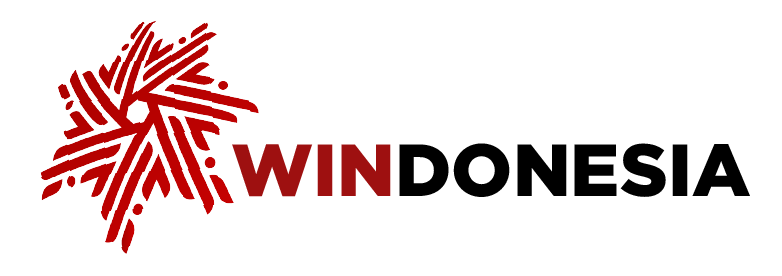Sector
Industry
Indonesia's industrial sector encompasses diverse subsectors that play a significant role in the country’s gross domestic product (GDP). Notably, manufacturing contributed 16.30 percent of Indonesia’s total GDP in the second quarter of 2023, with key activities including the manufacturing of textiles, automotive, electronics, and food processing. During the same period, other subsectors also experienced growth, led by the metal, computer, electronic devices, optical, and electronic appliances industry, which grew by 17.32 percent. This was followed by growth in the basic metal industry by 11.49 percent, the transportation industry by 9.66 percent, the food and beverage (F&B) industry by 4.62 percent, and the paper and recording media industry by 4.50 percent.
View moreIndustry
Indonesia's industrial sector encompasses diverse subsectors that play a significant role in the country’s gross domestic product (GDP). Notably, manufacturing contributed 16.30 percent of Indonesia’s total GDP in the second quarter of 2023, with key activities including the manufacturing of textiles, automotive, electronics, and food processing. During the same period, other subsectors also experienced growth, led by the metal, computer, electronic devices, optical, and electronic appliances industry, which grew by 17.32 percent. This was followed by growth in the basic metal industry by 11.49 percent, the transportation industry by 9.66 percent, the food and beverage (F&B) industry by 4.62 percent, and the paper and recording media industry by 4.50 percent.
Notably, the F&B industry stands out as the only non-mineral industry to have made the largest contribution to the national GDP at 38.61 percent in the first quarter of 2023, having generated US$1.1 billion from 2,226 projects through foreign direct investment (FDI) and Rp 26.72 trillion from 5,416 projects through domestic investment sources.
Indonesia’s massive industrial development has enabled the industrial sector to provide extensive employment opportunities, with over 19 million people employed in the sector, making it the largest workforce in Indonesia as of 2019. By 2024, the government aims to further increase employment in the sector to more than 20 million people.
Among all the subsectors, the non-oil and gas manufacturing industry has emerged as one of the most important in terms of employment, providing work opportunities for approximately 14.13 percent of the Indonesian labor force in 2022. Companies within this subsector are mostly concentrated on the island of Java. Additionally, the Riau Islands are known to have the highest average net wage for manufacturing workers in the country, with around Rp 5.55 million per month as of February 2023.
Furthermore, Indonesia's industrial sector presents promising opportunities for growth and development across various fronts, including Industry 4.0 transformation, adoption of sustainable practices, regional integration with Southeast Asia and Pacific actors, downstream manufacturing, and empowerment of small and medium enterprises (SMEs). Particularly concerning Industry 4.0 transformation, the government administers the integration of advanced technologies into the production process to improve efficiency and product quality. Additionally, efforts are underway to reduce production costs by placing cement, refined petroleum, automotive, and F&B at the forefront of entering Industry 4.0.
Moreover, the incoming administration has promised to bolster the downstream agenda, especially in the mining sector, with plans for 20 new smelters set to become operational between 2024 and 2025. The shift towards downstream mining products, such as bauxite, copper, and tin has the potential to increase their value, with added values reaching up to three to 180 times along the value chain.
Latest News
In a surprising turn of events to cap off the year, Nahdlatul Ulama (NU), Indonesia's largest Muslim organization, has been shaken by turmoil that many observers are calling an internal coup. At the center of the storm is the sudden political ousting of Yahya Cholil Staquf as chairman of NU’s executive body Tanfidziyah.
The catalyst for his removal was Yahya's invitation of Peter Berkowitz, an academic described by critics as having ties to an "international Zionist network", to an internal NU event in August. Yahya, who has a history of engagement with Israel, apologized for the invitation, but it was to no avail.
While Yahya has refused to yield his position, the Syuriah, the organization’s supreme council, moved unilaterally. In an official plenary session held in Jakarta on Dec. 9, the council named senior NU cleric Zulfa Mustofa as the group's acting chairman. The move carried significant political weight, evidenced by the attendance of high-profile government officials and senior NU members: Religious Affairs Minister Nasaruddin Umar, Social Affairs Minister Saifullah Yusuf and East Java Governor Khofifah Indar Parawansa.
At face value, the move against Yahya appears paradoxical. Since his election as chairman of PBNU’s Tanfidziyah in 2021, Yahya has been widely perceived as a staunch ally of the ruling government. Under his leadership, NU has taken pragmatic, some say controversial, steps to align with state policies. Most notably, this included accepting mining concessions under a government scheme allowing mass organizations to manage coal mines.
This concession was formalized through a controversial revision of the Mining Law earlier this year. The law was ratified in just three days without meaningful public or expert consultation, sparking significant backlash. Supporters framed the deal as a path to financial independence for NU, while critics viewed it as a moral compromise that tethered the religious organization too closely to extractive interests and state patronage.
That said, internal power struggles are not new to the current political climate. Late last year, when President Prabowo Subianto was still president-elect, the Indonesian Chamber of Commerce and Industry (Kadin) underwent a similar upheaval. Its then-chairman, Arsjad Rasjid, who had led rival candidate Ganjar Pranowo's campaign, was ousted in favor of the Prabowo-backed Anindya Bakrie. Arsjad initially contested the move as unconstitutional but eventually stepped aside after a compromise was reached.
However, the current NU debacle presents a crucial difference. The Kadin coup was a move against a political rival. Yahya, by contrast, has given no indication of opposing state authority. If Yahya is indeed aligned with the government, why has he become the target of an internal purge?
Observers point towards a proxy war between business factions. One faction within NU is believed to be close to Garibaldi ‘Boy' Thohir, a prominent coal magnate and brother of Youth and Sports Minister Erick Thohir. Another faction is linked to Hashim Djojohadikusumo, a key political financier and Prabowo's brother. Yahya has often been associated with figures close to Hashim, raising the question: why would a faction linked to the President's inner circle allow, or perhaps even orchestrate, his removal?
The contradictions deepen when considering the role of former vice president Ma'ruf Amin. A senior NU cleric, Ma'ruf has long been one of Yahya's most important allies. Yet, Yahya's replacement, Zulfa Mustofa, happens to be Ma'ruf's nephew. Zulfa claims he received his uncle's blessing to assume leadership.
This claim, however, clashes with the former vice president's public stance. Ma'ruf has openly rejected the manner of Zulfa's appointment, declaring Yahya's ousting illegitimate. He argues that under the group's constitution, a change in leadership cannot occur through a mere plenary session; it requires an Extraordinary Muktamar (Congress), reserved for emergency situations.
With NU now effectively split into dual leaderships, and Yahya continuing to assert his legitimacy, the organization is trapped in a stalemate marked by paradoxical power plays. Given the magnitude of the rift, it remains to be seen whether the Prabowo administration will intervene to resolve this quiet coup d'état.

